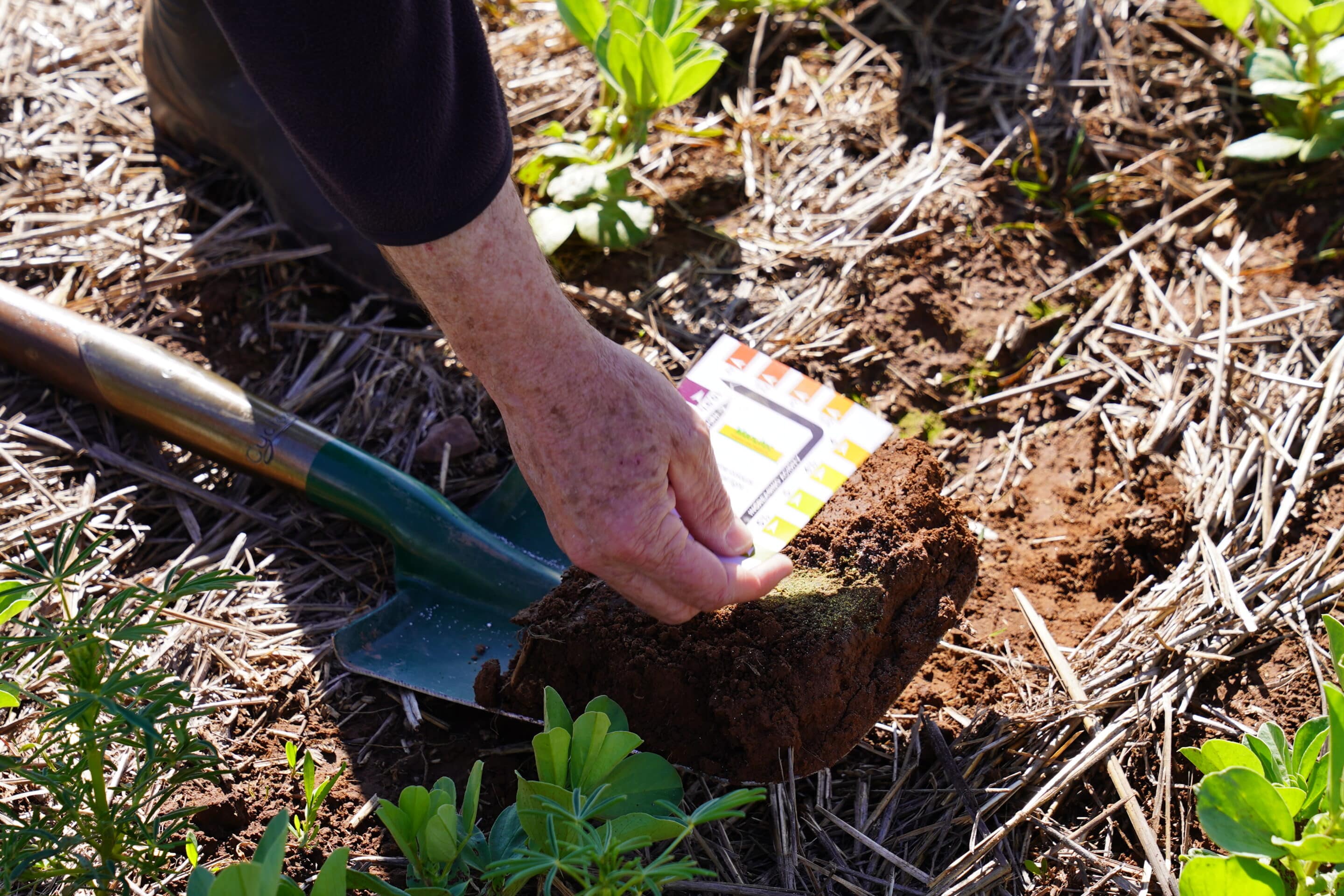START
FINISH

Summary
Calcareous soils in South Australia can have high phosphorous fertiliser fixation potential, making P nutrition challenging for growers.
Optimising P nutrition for the pulse phase of a cropping rotation can increase pulse production, nodulation and N fixation that benefits following cereals.
This project demonstrated that standard MAP application rates (40 to 50 kilograms per hectare) can meet pulse P requirements and deliver benefits to the subsequent crop phases, but higher fertiliser rates applied with pulse seed can negatively impact emergence in calcareous soils.
Background
Pulses are an important and valuable break crop for South Australian grain growers. Pulse rotations generate harvest income, support integrated pest and disease management, and fix atmospheric nitrogen into the soil for the benefit of subsequent crop rotations.
P nutrition in the pulse phase is critical for pulse growth, nodulation and yield. However, there has been limited knowledge of pulse P requirements on P responsive soil types in SA.
Research Aims
The core objectives of the project were to:
- Provide SA pulse growers with clear guidelines for optimising P fertiliser forms and rates for pulse crops on P-responsive soils.
- Determine the economic benefits of improved P nutrition through measured biomass, N fixation and yield.
In The Field
Using a traditional rotation program, field trials of pulses were established on P responsive soils to assess the optimal rate of mono-ammonium phosphate (MAP) application in year 1 of the trials and potential N benefits to the following cereal or canola crops in years 2 and 3.
Trial sites at Urania (2019) and Port Broughton (2020) were sown to chickpea, faba bean, lentil and wheat. The Urania site was sown to canola for 2020 and wheat for 2021 and Pt. Broughton was sown to wheat for 2021.
Additional field trials of lentil at each site were used to determine the optimal form and rate of P applications. P was applied as MAP with and without N balancing, Pasture King, and Phosphoric Acid at rates of 0, 5, 10, 20 and 40 kg P/ha. Pulse crops were assessed for nodulation, N fixation and yield.
Results
This project has outlined the main benefit of identifying P responsive soil types and increasing P rates accordingly to maximise yields and gross margins. For all trial sites pulse yields were generally less than a third of the yield obtained for wheat. In season assessments of nodulation, NDVI at peak biomass revealed small positive trends with increasing applied P.
The greatest response to applied P was observed in wheat at both sites, with yield increases of 0.85 tonnes per hectare observed at Urania (max yield 4.45t/ha) and 0.7t/ha at Port Broughton (max yield 1.3t/ha). Optimal P rates at both sites was approximately 30kg P/ha.
The highest cumulative yields at Urania were obtained from a Wheat-Canola-Wheat rotation at 30 kg P/ha, which returned the highest calculated partial gross margin (returns from grain yields minus fertiliser costs). Faba Bean-Canola-Wheat (20 kg P/ha) returned the next-best partial gross margin. At Port Broughton the Wheat-Wheat phase returned the greatest yields but the Lentil-Wheat phase (10-20 kg P/ha) provided the highest partial gross margins. Emergence of pulses was affected by fertiliser toxicity at Port Broughton due to the dry conditions and higher inherent soil salinity.
Applied P (>10 kg/ha) increased nodulation for faba bean and lentils. Importantly applications of MAP at commonly applied levels in pulses (50-60 kg/ha) did not reduce crop nodulation. Generally higher P levels improved N fixation above that of 0 P. Where agronomic conditions are suited to the pulse variety, N fixation levels can be high. For example, faba bean at Urania (20 kg P/ha) fixed over 100 kg/ha, which was reflected in the partial gross margins.
Key Findings
- Optimising P nutrition in the pulse phase of a crop rotation can increase pulse nodulation and N fixation, providing carry-over N for the cereal crops.
- Standard rates (40 to 50kg/ha) of MAP are sufficient to meet pulse P requirements.
- High fertiliser rates applied with seed can negatively impact pulse emergence, particularly on calcareous soils with high salt loads. Fertiliser should be offset where possible.
- Lentil response with different forms of P fertiliser was similar.
Project Participants
Agronomy Solutions: Dr Sean Mason
AgXtra: Anthony Smith, Richard Porter
Central Ag Solutions: Sam Holmes
Ag Consulting and Research: Stefan Schmitt
SARDI: Dr Liz Farquharson
The Problem
Phosphorous nutrition can be a challenge for grain growers on calcareous soils with high P buffering capacities.
The research
This project improved understanding of P requirements for pulse rotations, and the flow-on potential from improved N fixation.
More information
Sean Mason, Agronomy Solutions
T: 0422 066 635
E: [email protected]
Value for Growers
This study led to new knowledge and guidelines to help SA grain growers optimise P nutrition on calcareous soils in the pulse phase and improve gross margins in subsequent cereal phases. The impacts of fertiliser application and potential risks to seedling emergence in more saline soils was highlighted.




